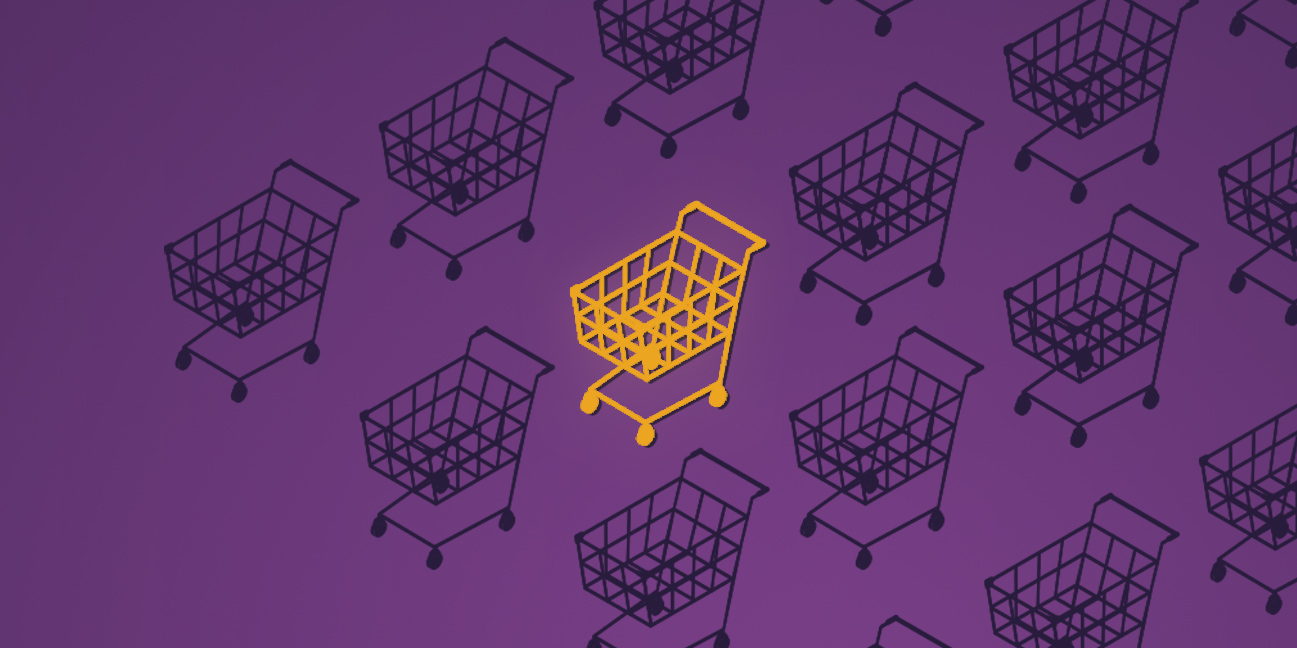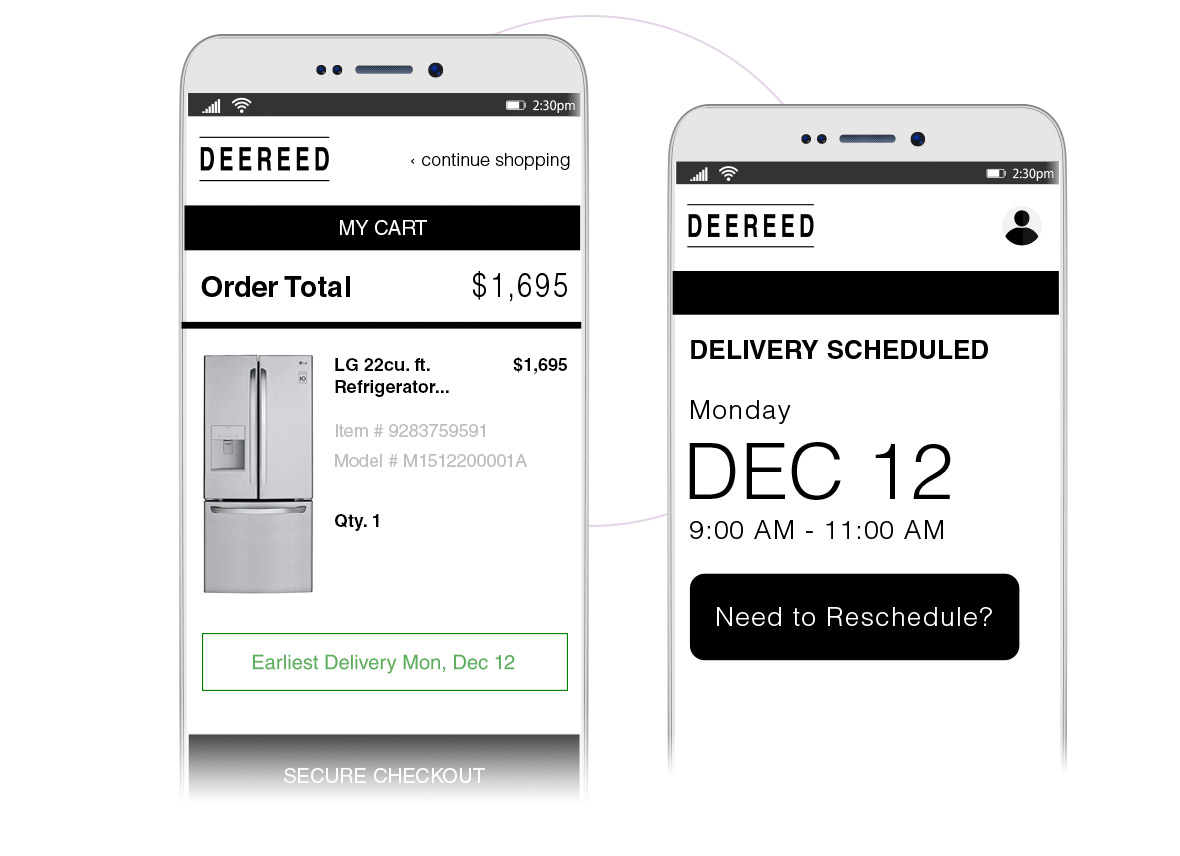
If you’ve noticed similar numbers with your sales, you’re staring the problem in the face: A high rate of cart abandonment.
Cart abandonment is what happens when your web traffic reaches the point of conversion and/or purchase, but drops away. This applies even while the customer is in the middle of the purchasing process.
If it sounds like an occasional glitch, it’s not. Cart abandonment is pervasive in the world of online retail. According to some sources, the global average abandoned cart rate is as high as 75% across the board.
In other words, customers who don’t abandon the cart are the exception–not the rule. But why is cart abandonment so common? And what exactly does it have to do with delivery?
Let’s explain shopping cart abandonment, explore some key strategies to lower your own cart abandonment rates, and provide a seamless customer journey.
Cart Abandonment By the Numbers: Why Customers are Leaving
Statista data shows global cart abandonment rates are approaching 70%. With numbers that high, it’s clear that there isn’t just one reason a customer will abandon their cart. There are lots of factors involved, including:
- Slow load times: Sometimes it comes down to human nature: we only have so much patience. Slow-loading sites can increase the cart abandonment rate by as much as 75%.
- A long or complicated check-out: The faster the checkout experience, the better. That’s why customers prefer to avoid leaping through hoops to make a purchase. They want a convenient process. If you deny customers that convenience, they’ll simply click away. As many as 35% of your customers may click away when they have to register to your site.
- Long delivery times: Imagine getting excited to find the exact product you were looking for, but when you check out, you find that your tracking page reports a long delivery time. Might you change your mind about the purchase, or never order from the same brand again? You’re not alone. As we reported in our eBook, “Last Mile Delivery Wars,” delivery times have a major impact. 29% of customers are more likely to buy if the delivery is within one week, and 20% are more likely to buy if they get to control the delivery day.
Improving Your Cart Abandonment Rates: Four Questions to Ask Yourself
Your online shopping cart is an important interaction, but it’s one interaction among many. Ask yourself these three questions to understand why your shopping cart experience might be shutting your customers out of the purchase:
What’s Your End-To-End Customer Experience?
23% of U.S. customers reported shopping cart abandonment due to a “too long, or complicated checkout process.” The abandoned cart doesn’t happen in a vacuum. It’s another stage in your customer’s journey. Try to identify any leaks along the way. Where are you not communicating with your customers? At which stage are they leaving the journey? Is your checkout too complicated?
Because 83% of customers will churn after a negative delivery experience, top retailers are making bold delivery promises as early as the product page, showing estimated delivery dates. The customer experience doesn’t stop after your customer hits the buy button. The inability to update the customer on a shipment issue could lead to future shopping cart abandonment, or even worse, it could lead to lost customers.
On average, our data, consisting of billions of shipment events, shows that 11% of packages are likely to face some sort of delivery issue such as a delay or damages. It also shows that 6% of parcel shipments will face issues in-transit, such as missed pick-ups or transfers.
[Learn how Convey’s AI-fueled delivery data can display estimated delivery dates as early as the product page.]
Are You Reinforcing Benefits Throughout The Shopping Experience?
Your shopping experience should be rewarding for the customer. But will the customer respond in kind if they have no idea when or how their product will arrive?
We found that 60.7% of customers are more likely to purchase if they saw delivery times in the cart. Don’t let your customers experience “friction” with disappointment in your delivery process. Here are three key factors to concentrate on:
- Delivery transparency: 47% of customers say that they’ll avoid re-ordering with a company because of a lack of transparency with the delivery.
- Delivery dates: As many as 49% of customers will abandon their cart simply due to a mismatch between their expectations for the delivery date and the actual delivery date. It’s crucial to offer accurate delivery dates early on.
- Delivery follow-through: Once customers make a purchase, do they return to you? Or does your shopping cart remind them of a previous experience that went south? We find that 98% of shoppers hinge their brand loyalty on the last mile delivery experience.
This means that shoppers will buy from retailers who can offer competitive, but accurate, delivery dates. However, It also means that if the quality of your delivery process fails to match customer expectations–or keeps the customers out of the loop, it can lead to churn. [Learn how Convey Convert presents delivery dates as early as the product page.]
Do Buyers Trust Your Shopping Experience?
You might present everything the right way, but if the customer doesn’t trust you, they can still back away. Here are some ways to bolster customer trust and improve cart conversion:
- Create a consistent buyer’s journey: Hanging a security banner on your cart isn’t enough; if the shopping cart includes too many upsells, hoops, or other red flags, they’ll lose that trust. Focus on creating a consistent shopping experience, and don’t spring any surprises on your customers.
- Make your order delivery clear: Do customers know when to expect your order? Is it visible and clear? In our previous section, we noted that customers are more likely to purchase if they see a delivery date. According to 98% of shoppers, that’s the kind of transparency that builds trust.
- Optimize shipping costs: In our consumer research, customers consistently cite delivery cost as a primary concern. When someone adds a product to their shipping cart, they’re doing it based on the price before shipping. If your costs with shipping increase the cost too drastically, it can decrease trust.
Are You Keeping Your Brand Promises?
Cart abandonment is a natural part of doing business online. But if you observe customer behavior, you can reduce your cart abandonment and increase conversions.
We like to think of it like this: “If you make a promise, keep it.” Providing accurate information upfront helps move the customer along the customer journey, and if issues arise later on, they can adjust expectations and fuel long-term loyalty.
Take steps to make your fulfillment experience as transparent and efficient as possible. You’ll find it increases your average abandoned cart rate and helps build trust in your brand.

